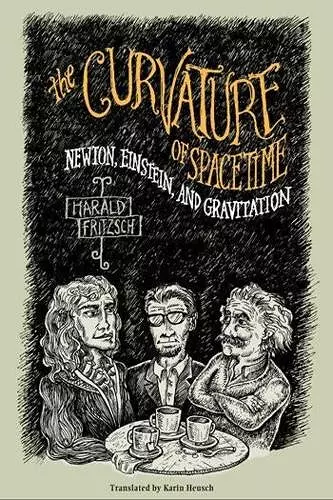The Curvature of Spacetime
Newton, Einstein, and Gravitation
Harald Fritzsch author Karin Heusch translator
Format:Paperback
Publisher:Columbia University Press
Published:14th Jan '05
Currently unavailable, and unfortunately no date known when it will be back

The internationally renowned physicist Harald Fritzsch deftly explains the meaning and far-flung implications of the general theory of relativity and other mysteries of modern physics by presenting an imaginary conversation among Newton, Einstein, and a fictitious contemporary particle physicist named Adrian Haller. In this entertaining and involving account of relativity, Newton serves as the skeptic and asks the questions a modern reader might ask. Einstein himself does the explaining, while Haller explains the new developments that have occurred since the general theory was proposed.
Explains the meaning and far-flung implications of the general theory of relativity and other mysteries of modern physics by presenting a conversation among Newton, Einstein, and a fictitious contemporary particle physicist named Adrian Haller.The internationally renowned physicist Harald Fritzsch deftly explains the meaning and far-flung implications of the general theory of relativity and other mysteries of modern physics by presenting an imaginary conversation among Newton, Einstein, and a fictitious contemporary particle physicist named Adrian Haller-the same device Fritzsch employed to great acclaim in his earlier book An Equation That Changed the World, which focused on the special theory of relativity. Einstein's theory of gravitation, his general theory of relativity, touches on basic questions of our existence. Matter, according to Einstein, has no existence independent of space and time. It is even capable of bending the structure of space and changing the course of time-it introduces a "curvature." Gravity emerges not as an actual physical force but as a consequence of space-time geometry. Even the apple that drops from the tree follows the curvature of time and space. In this entertaining and involving account of relativity, Newton serves as the skeptic and asks the questions a modern reader might ask. Einstein himself does the explaining, while Haller explains the new developments that have occurred since the general theory was proposed. The result is an intellectual roller-coaster ride in which concepts that have entered the vernacular become clear for the first time: the Big Bang, "black holes," elementary particles, and much more.
In his latest book, the renowned German physicist Harold Fritzsch adopts an interesting method of explaining Einstein's relativity theory and its implications. Toronto Globe & Mail Fritzsch'sThe Curvature of Spacetime is a time-travel dialogue set in 1996 between three men: Isaac Newton, Albert Einstein... and an imaginary modern expert, Adrian Haller... As an expository device, the dialogue form is quite successful. It lets Haller teach Einstein and Newton (and us) the current status, experimental and theoretical, of particle physics, drawing the reader into exchanges of view and conflicting ideas more readily than conventional exposition would allow. -- Francis Everitt Nature There have been many admirable attempts to bring Einstein's ideas to a wider public, and I am sureThe Curvature of Spacetime makes a contribution to that process -- Robert Pepperell Leonardo Review
ISBN: 9780231118217
Dimensions: unknown
Weight: unknown
368 pages